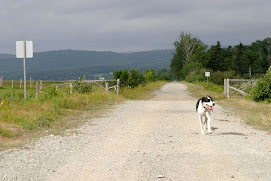My daughter came home from 5th grade today and showed me the internet site her teacher had the class work on. It was a series of computer games dedicated to finding “energy hogs” in each of five rooms in our houses: drafty windows, an uninsulated attic, conventional lightbulbs, old refrigerators and excessive showering.
The organization that produced the website, the Alliance to Save Energy, appears to offer sensible advice about energy conservation, without resorting to global warming alarmism, but the Energy Hog site aimed at children raises a number of questions.
Essential curriculum?
First, we can ask whether energy conservation should be part of the fifth grade science curriculum. As we know from curriculum battles, any lesson included excludes another. Public school teachers complain that their curriculum has been so weighed down by the requirement to teach to standardized tests that they have no room for creativity—to teach students how to think rather than memorize facts. Given the intense competition for inclusion on the schedule, should lessons about caulking leaky windows and insulating attics make the cut? Fifty years ago such topics would be part of the voc-tech curriculum. Children don’t own houses and if they’re planning on going into the house building trade, they have plenty of time after fifth grade to learn about building codes.
Obviously, the point of teaching children about energy conservation is to reach their unenlightened parents who aren’t such captive listeners. The website is filled with suggestions like, “Ask your parents about switching to newer compact fluorescent bulbs.” “Ask your parents how old your fridge is and if it's time to buy a new one.” “Remind your parents that one large fridge is better than two smaller old ones.” The site asks: “Do you have a second old refrigerator sitting in the garage or somewhere else at home? If so, urge your parents to get rid of it.” The language here is polite, inviting a respectful dialogue between parents and children. The energy hog game, however, revolves around finding ugly disgusting energy hogs. Thus if the parent responds to his fifth-grader’s question that no, he doesn’t want to replace the refrigerator just yet, is it surprising that the child will insist righteously that it is his duty to fight energy hogs? And is it surprising if the child sees not just the appliance as an energy hog but his parent as well? Excessive showering after all isn’t the shower’s fault, so the person malingering in the shower is the real energy hog; in fact, my daughter’s eighth grade friend complained that every time she took a shower her little brother stood outside the bathroom door with a watch, screaming that she was wasting energy when she went over the allotted time.
Targeting children is doubly effective; it reaches the parents with an emotional plea that they might ignore from another adult. And it indoctrinates the children so they become good environmentalists when they grow up. The 1960s leftists left the streets and moved onto the university campuses—what some called the Long March through the university, with an explicit aim of converting the next generation. One might argue that teaching children about energy conservation is not indoctrination, but simply a lesson in being good citizens. There’s a big difference between caulking windows and the Hitler Youth or Khmer Rouge child soldiers. Still, there is something unpleasant about the intolerant righteousness encouraged by energy-hog-think. Furthermore, it is ironic that teaching social morality in a civics class has long been derided by progressive educators.
Energy Hog Solutions
Secondly, one should ask about the solutions proposed in the energy hog game which are presented without the slightest bit of nuance (why is it that liberals always accuse conservatives of seeing the world in black and white when their worldview is inhabited by far more Manichean rights and wrongs?)
1. Caulking windows: this suggestion is sensible, although I question how many houses in Boston have leaky windows. It is also important to recognize the dangers of indoor air pollution, which causes far more deaths than outdoor air pollution. The most egregious indoor pollution comes from houses with unvented fires—an issue in Nepal but not in suburban Boston—but modern building materials also emit formaldehyde and other volatile organic compounds which are suspected of being carcinogenic. When a house is sealed tightly with caulking and insulation, it needs to have a fresh air ventilating system installed. In this case the demands of “green” building are in conflict with those of “healthy” building; running a fan to circulate fresh air uses energy.
2. Insulation: again, a sensible suggestion. However, insulation poses many health issues. For instance, fiberglass, the most common insulation, contains formaldehyde and if not sealed behind a vapor barrier and left exposed to the living areas will emit particles of fiberglass that float in the air. These are breathed in and lodge in the lungs much like asbestos. Although studies indicate that they do not cause anything like asbestiosis, the full effects are unknown.
3. Installing compact fluorescent lightbulbs (CFLs): on the whole, CFLs may be a good idea, but they are far from a panacea. The bulbs contain mercury, creating a new source of hazardous waste that must be disposed of, and health hazards if broken. Neither of these dangers is mentioned on the energy hog site. CFLs are larger and heavier, requiring more energy to ship, and use more resources to manufacture. The heat produced by conventional bulbs is less of a liability in winter. Conventional lightbulbs are manufactured in the United States under EPA guidelines, while all CFLs are made in China under much laxer environmental standards, with energy generated by unregulated coal plants. CFL makers claim they last for 7 years, but the long-life conventional bulbs I have bought never live up to their claims, so I am skeptical. Likewise the claim that a 13 watt CFL is equal to a 60 watt incandescent bulb seems suspicious. Rooms lit with CFLs always seem dreary. Leaving on lights in an empty house is wasting energy (apart from their value of deterring criminals from breaking in.). A single 13 watt compact fluorescent bulb might provide sufficient light to accomplish the tasks we need to do in a room, but well-designed multiple light sources adds pleasure to our lives. It is not wasting energy; it is using energy.
4. Replacing an old refrigerator: a new Energy Star refrigerator uses around $45 of electricity per year, compared to an energy hog which uses “up to” $125/year. Thus buying a new refrigerator can save up to $80/year; an $800 refrigerator will pay for itself in 10 years. Replacing your refrigerator however will add an old carcass to the landfill, and manufacturing a new refrigerator uses energy and resources. At some point it makes sense to replace an inefficient refrigerator, but the decision is more complex than indicated by the energy hog game and presented to 10-year olds without nuance. Efficient refrigerators have been around for a decade or so, so the current old refrigerator might already be fairly efficient. Is it really appropriate to have a 10-year old taking part in a family decision to buy a new appliance? What if the family budget does not have room for an $800 purchase? What if the parents decide to spend the $800 on a vacation on Cape Cod? Is it appropriate for our science curriculum to use shame about wasting energy to influence family spending decisions?
5. Excessive showers: parents yelling at teenagers for taking long showers is a staple of family life. The parents’ concern is most often based on the cost of the electric bill and a sense that excessive use of water is wasteful—especially if the house draws water from a well, or the area is experiencing drought. But to identify a hot shower as wasteful is troubling. I never take a hot shower for granted. Heating sanitary water, piping it to a shower stall and removing the wastewater through a drain is one of the accomplishments of civilization that makes our lives immeasurably better than that of our ancestors. The Romans enjoyed the similar luxury of baths, unknown to the Vandal hordes. If Osama bin Laden is alive, his cave lacks plumbing and he thinks the West is decadent for desiring such luxuries. The site says: “Energy Hogs love to eat up hot water. Most of the water wasted in a home is wasted in the bathroom.” Running a hot shower with no one in it is wasting water. Enjoying a hot shower in an area with plentiful water is not a waste of energy. It is using energy.
Global Warming
Finally, the Energy Hog game does not specifically mention global warming, but the specter of Al Gore’s 20-foot rise in sea levels lurks in the background. If urging your parents to insulate their attic will save the planet, what educational topic could possibly be more important? Isn’t it better to have the shower Nazi prevent his sister from enjoying a ten minute hot shower in order to prevent death and starvation of poor innocent Bangladeshis?
I am one of that reviled species of Global Warming Deniers, so I don’t believe that energy conservation will save the planet. As a frugal Yankee, I will probably yell at my teenagers if they stay too long in the shower, but I don’t think that by doing so I am saving the planet. The environmentalist hates SUV drivers or people who leave all their lights on because they are energy hogs who take more than their share of the planet’s resources. I however think Peter Huber had it right when he says that energy comes from a Bottomless Well. I don’t drive an SUV and I turn my lights off when I leave the room, but I think the market price of energy should determine how we use it. If you can afford to fill up an SUV, and you want to drive an SUV, then your 10-year son shouldn’t be instructed by his teachers to urge you to buy a hybrid. If you can afford to pay the electric bill for incandescent recessed lighting on your kitchen counters, you should enjoy what our technological society has created. Let Osama sit in his cold dark cave.
skip to main |
skip to sidebar


Culture War Dispatches
from a Progressive People's Republic
Daisy takes a walk

"I detest the notion of a new dawn in which homo sapiens would live in harmony. The hope this Utopia engenders has justified the bloodiest exterminations in history." --Francois Bizet, Khmer Rouge survivor
"Of all tyrannies, a tyranny sincerely exercised for the good of its victims may be the most oppressive." --C.S. Lewis
Daisy

Blog Archive
-
▼
2008
(64)
-
▼
February
(12)
- Toxic waste good for planet, study says
- Energy Hogs
- Uni-Bama
- Penguin catastrophe!
- National Security Ghost Stories
- The Sunlight of Legal Justice
- Boston Globe: Conservative soapbox
- What Middle Ground?
- Deadly SUVs (cont.)
- The Dick Durbin Pol Pot Connection, 2
- World's Best Dog Walks No More
- Starting With Our Own
-
▼
February
(12)